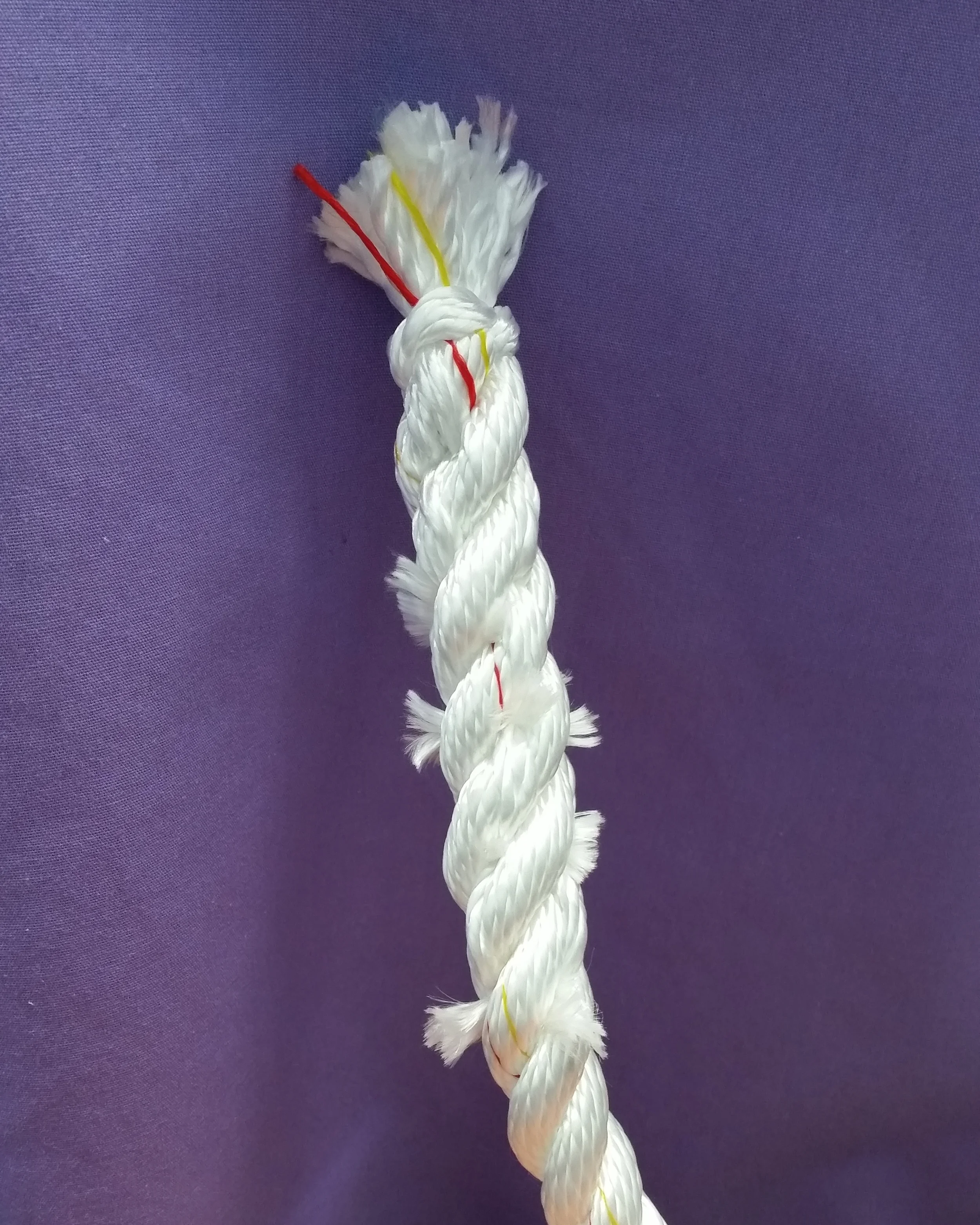When you buy rope, they always offer to sear and melt the end of the line to keep it from fraying. While melting the end will help keep the line together longer, it actually does more harm than good.
A seared end will be hard and may have sharp edges that can scrape the topsides or chafe on other parts of the line. The end of this supple line will turn into a rock hard scraper that will tear into everything around it. If you coil the line up on the deck and then pile other things on the line, that seared end will be under a good amount of pressure. Rather than flattening out, it will simply dig into the topsides. As the boat moves around, that hard edge will scrape and scratch everything under it.
The solution is very simple: Don't melt the ends!
Either whip the end of the line, backsplice the end of the line, or if you are in a real rush: tie a stop knot in the end of the line.
Whipping the end is a bit time consuming, and you need to have whipping twine handy. I personally keep a few spools and needles in my splice kit on board, but I do this professionally. Most people don't keep these sorts of things.
Backsplices are the alternative when no whipping twine is available. It simply takes the end of the line and ties it back to itself.
Knotting the end is the least desirable solution. It is bulky and clunky, but also insanely quick! If you need to cut a rope in a hurry and put it to use, simply tie a knot in the end and that will stop the whole rope from fraying. Try to place the knot as close to the end as possible, because everything after the end can fray.
Back to the fuzzy ends! When you finish a splice or whipping, don't sear the ends of the lays. This will simply make more of those hard spots that will cause problems. Simply fuzz the ends of the lines and lays!
Fuzzy ends prevent chafe because when a load is applied to the side of the line, the line can deform and flatten out. When something rubs up against the end, it will be pushing against a very large area (compared to the point of a seared end) that is very soft and forgiving. This is why the chafe protectors (Baggy Wrinkles) on tall ships are fuzzy. Fuzzy ends are something that should be desired instead of melting them out of existence!
Fuzzy ends also weather over time, just like natural teak. As time goes by, the fuzzy parts begin to look more and more weathered as they age. While the line won't be new and shiny anymore, it does begin to look very seasoned as the miles and years pass by.
The ends get worked and the line stays together. Fuzzing the ends of the line can make a sweeter situation out of a bitter end.




